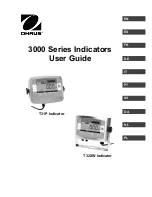
16
DVI
(Digital Visual Interface): A digital interface
standard created by the Digital Display
Working Group (DDWG) to convert analog
signals into digital signals to accommodate
both analog and digital monitors.
HDCP
(High-bandwidth Digital-Content
Protection): developed by Intel to provide
secure copy protection of content transmitted
digitally from the source (such as DVD player
or set-top box) to the TV display.
VGA
(Video Graphics Array): a common
standard graphics display system for PCs.
RGB signals :
These are the three video signals,
Red Green Blue, which make up the picture.
Using these signals improves picture quality.
S-VHS Signals:
These are 2 separate Y/C video
signals from the S-VHS and Hi-8 recording
standards. The luminance signals Y (black and
white) and chrominance signals C (colour) are
recorded separately on the tape. This
provides better picture quality than with
standard video (VHS and 8 mm) where the
Y/C signals are combined to provide only one
video signal.
NICAM sound:
Process by which digital sound
can be transmitted.
System:
Television pictures are not broadcast in
the same way in all countries. There are
different standards: BG, DK, I, and L L’. The
System
setting (p. 6) is used to select these
different standards. This is not to be confused
with PAL or SECAM colour coding. Pal is used
in most countries in Europe, Secam in France,
Russia and most African countries. The United
States and Japan use a different system called
NTSC. The inputs EXT1 and EXT2 are used to
read NTSC coded recordings.
16:9:
Refers to the ration between the length and
height of the screen. Wide screen televisions
have a ration of 16/9, conventional screen TV
sets have a ration of 4/3.
Glossary
LC04C2~1.1GB.qxd 7/27/05 2:04 AM Page 16

































